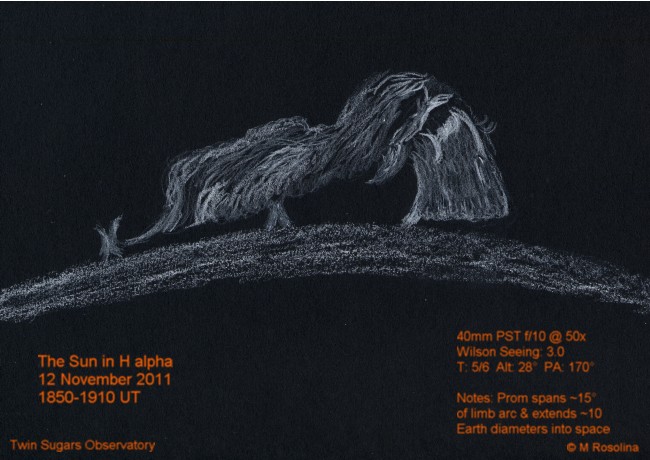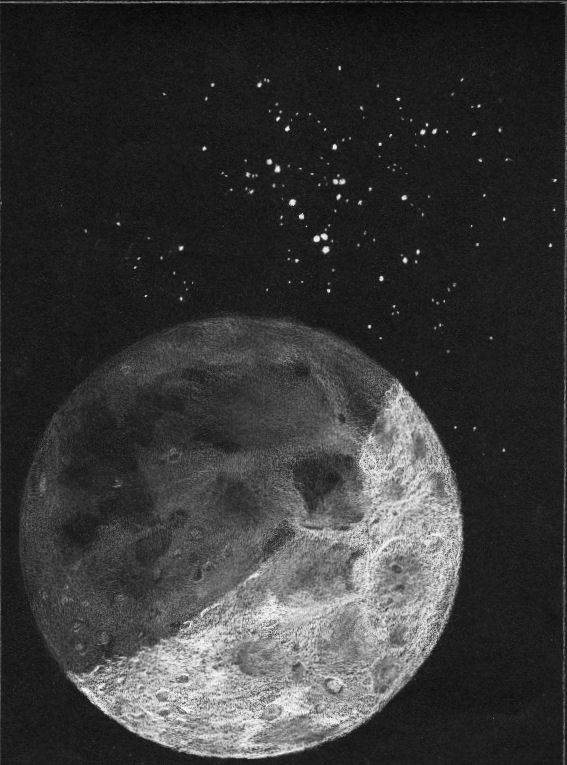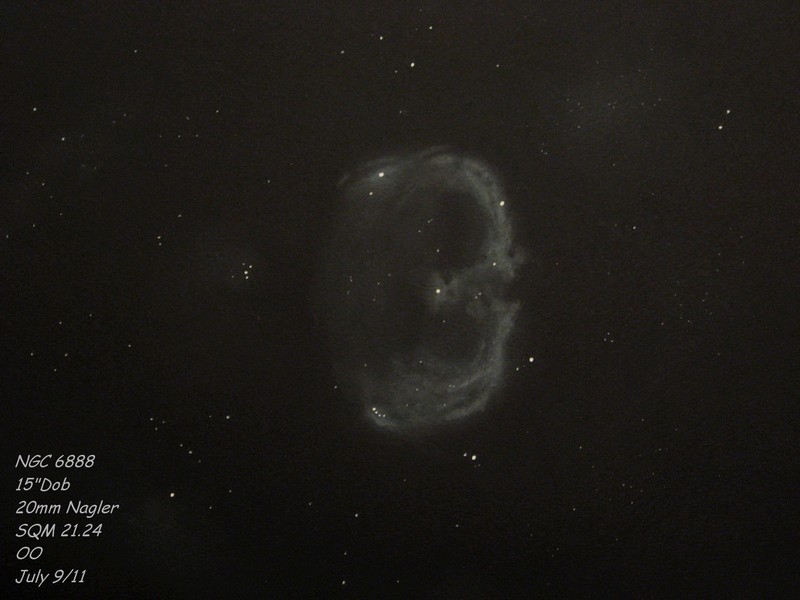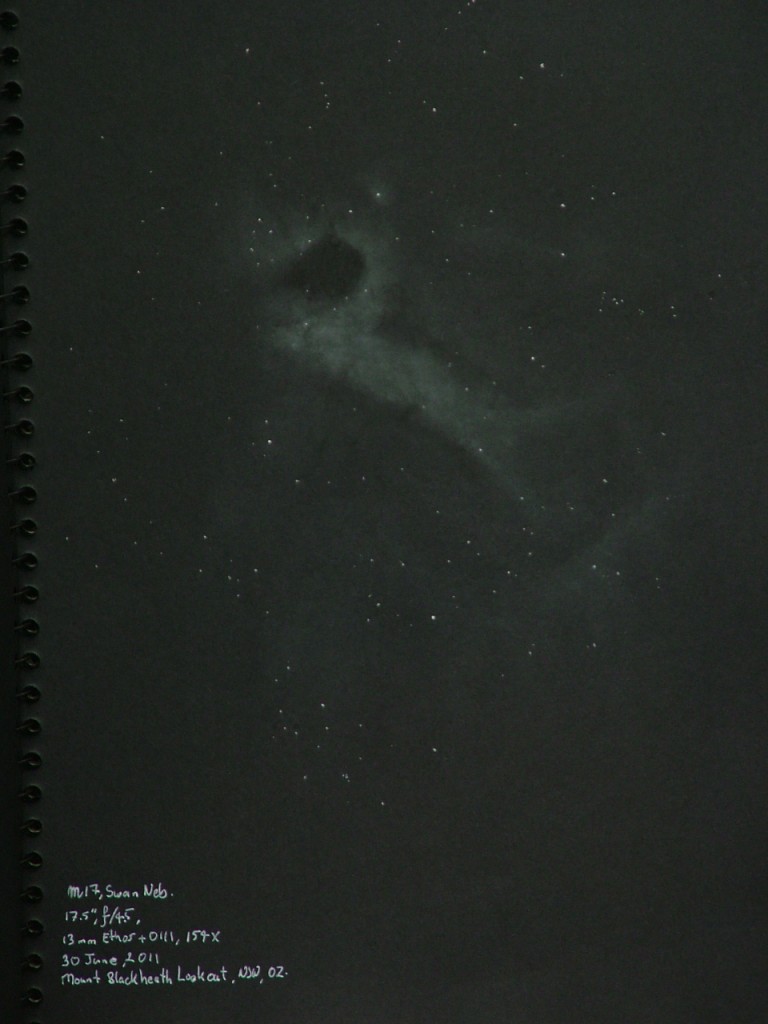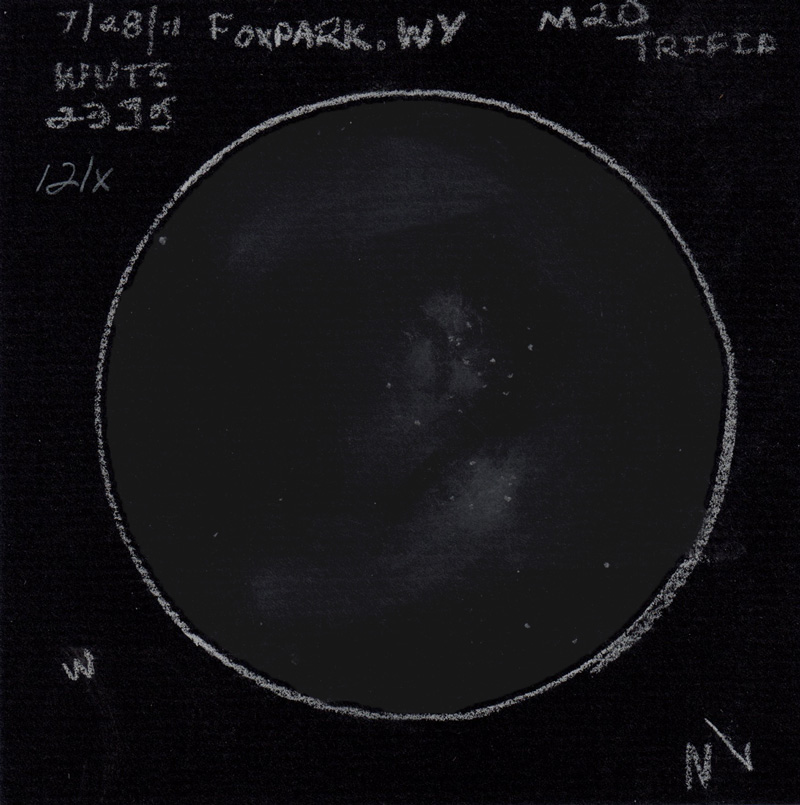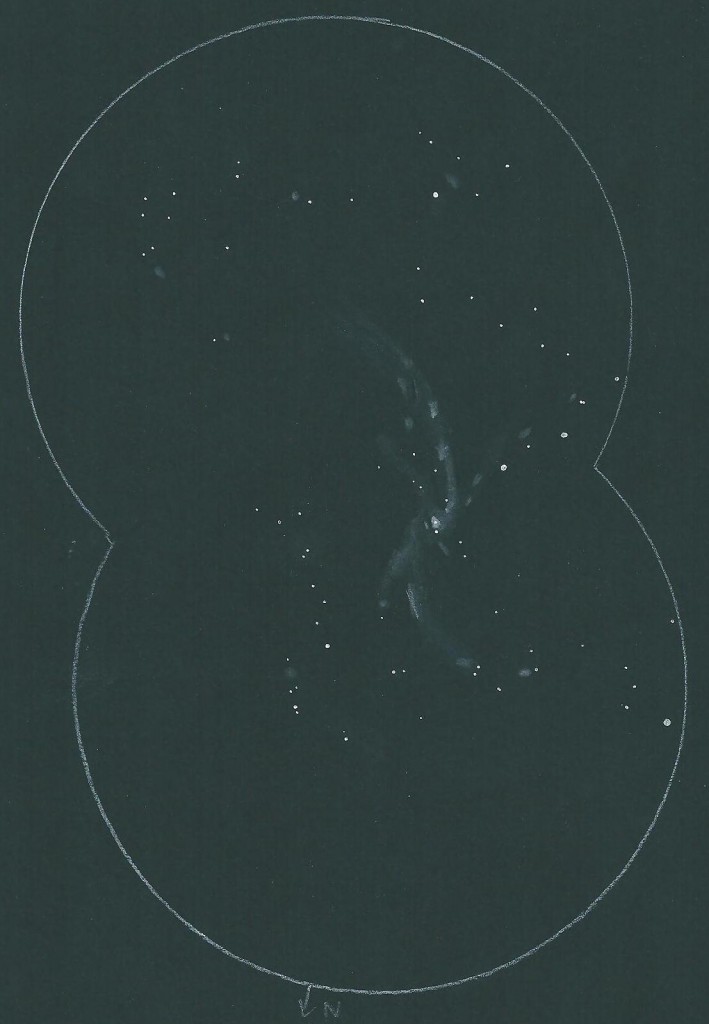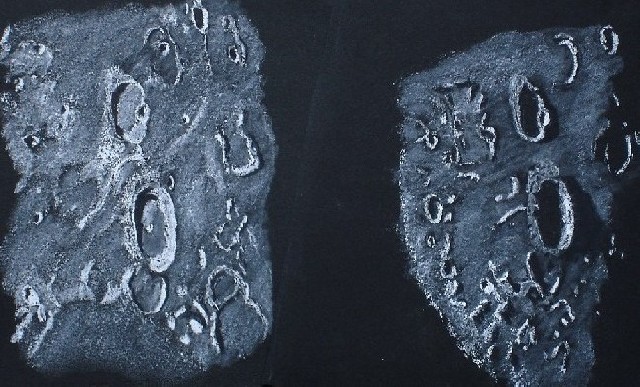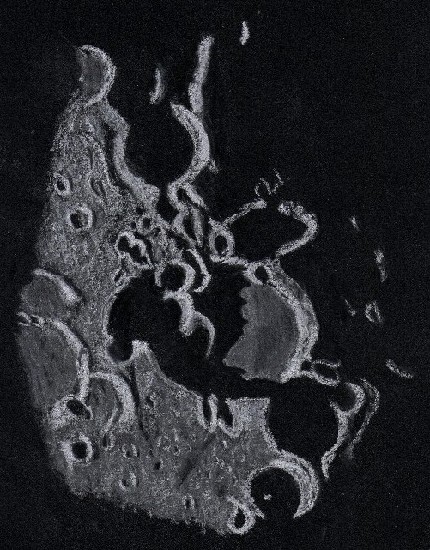
One could sketch the plethora of craters in the southern highlands and not finish them for many years. The craters for sketching chosen here are ones I have not sketched before but were standouts on this evening. The finest sketch I have ever seen of this region was made back in January of 2007 by Sally Russell and can be seen at Astronomy Sketch of the Day for March 27, 2007.
The central large crater that anchors this sketch is Pre-Nectarian period Stöfler a 129 kilometer walled plain with a buried central peak. Piled on top of it to the southeast are a sequence of craters decreasing in size and including one without a name, then Faraday ( 71 km.), Stöfler P ( 34 km.) and Faraday C ( 30 km.). North of Stöfler most of the rim of crater Fernelius (66 km.) was visible but all of the floor was in darkness.
I was forced to work quickly as clouds were rolling in at about the time I was just beyond mid-sketch.
Equipment and Sketching:
Telescope: 10 inch f/ 5.7 Dobsonian on a drive platform 4mm ortho eyepiece 361x
For this sketch I used: black Strathmore 400 Artagain paper 9″x 12″, white and black Conte’ pastel pencils and blending stumps, white Pearl eraser.
Date: 11-2 to 11-3-2011 23:30-00:40 UT
Temperature: 17° C (63° F)
Partly cloudy soon becoming mostly cloudy, high humidity 70%
Waxing gibbous phase
Seeing: Antoniadi III
Transparency: 6/10
Colongitude: 356.6 °
Lunation: 7.2 days
Illumination: 53.2 %
Frank McCabe

